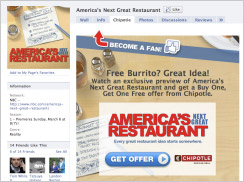Want to Know What Your Clients Think? Ask Them.
New online tools give marketers access to information formerly available only through research. Usually expensive research. But as we monitor the latest feedback from Google Analytics or Flowtown, we shouldn’t forget another proven tool: online surveys.
At Greteman Group, we’ve long championed the use of web-based survey tools to garner unique, collective insights from both clients and their customers. We never fail to uncover some nugget of truth that launches our strategy and creative in unexpected, results-generating directions.
Here’s How It Works
We create online surveys that we send to our main client contact. He or she forwards the survey link to key colleagues, customers and partners. This is especially valuable in new client-agency relationships. Survey feedback helps uncover a brand’s perception in the marketplace – and how that aligns or differs from the client’s. Even though we bring strategy and fresh thinking to these conversations, nothing can replace feedback from the folks who live and breath the brand.
Two benefits to a web-based survey tool that no other tool can match:
1. Efficiently gathering a large quantity of information.
Email chains and Twitter hashtags are nice, but if you want to get the answer to a question like “What is your company’s #1 reason for having a website?” nothing can replace that delightfully long bar after the “Increasing sales” or “Informing members” answer that received 100% of votes from the internal team. Not only does information like this affirm strategy, it dictates next steps, such as how the website will be built to drive sales or inform members.
2. Calling internal questions and driving strategic decisions.
But what the survey returns a lot of “non-100% answers?” What if half your team thinks your brand should be bright and fresh, and the other half thinks classic and muted is a better reflection of the company? Or a majority of your customers are on Facebook and you’re not? These are the kinds of facts that only a survey can reveal, and they can often force clients into much-needed exploration of a policy, process or position. These decisions must be made before a re-brand, campaign or project can take place.
Nothing has proven more efficient or effective than gathering and analyzing results from web-based surveys when embarking on a new client relationship or campaign.
 I witnessed history today. And it made me feel proud. Of my community and the industry we love so well: aviation.
I witnessed history today. And it made me feel proud. Of my community and the industry we love so well: aviation.
